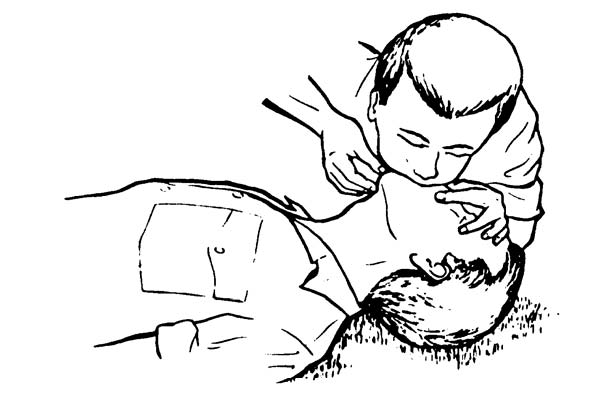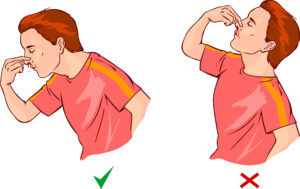Mouth to mouth resuscitation is a form of artificial ventilation given to person who fainted or drowned . In this method the rescuer put’s his mouth to the victims mouth and blows air to his lungs through the mouth . This is done for a person who is not doing well with his or her breathing and fainted . mouth to mouth resuscitation is usually done as a continuation of Cardio Pulmonary Resuscitation .
MOUTH TO MOUTH RESUSCITATION ON A CHILD BELOW 8 OR AN INFANT
• Place the victim on a hard or plain
surface.
• ensure that the mouth and throat are clean
or clear for the air to pass. If something is stuck in the throat or mouth try to sweep it out with your fingers . If vomiting
occurs, turn the child onto his or her
side and sweep out the mouth with
two fingers.
• Tilt the head back slightly to open
the airway. • Place your mouth tightly over the
mouth. Blow two quick, shallow breaths
(smaller breaths than you would give to an
adult). Watch for the chest to rise.
• Remove your mouth. Look for the chest to fall
as the child exhales.
• Listen for the sounds of breathing. Feel for the
child’s breath on your cheek. If breathing does
not start on its own, repeat the procedure.
MOUTH TO MOUTH RESUSCITATION FOR AN ADULT
- Make sure the person is lying on a hard, flat surface. Look into the mouth and throat to ensure that the airway is clear. If an object is present, try to sweep it out with your finger vomiting occurs, turn the person on his or her side and sweep out the mouth with two fingers.Do not place your finger in the mouth if the person is rigid or is having a seizure.
- Tilt the head back slightly to open the airway. Put upward pressure on the jaw to pull it forward.
- Pinch the nostrils closed with thumb and index finger. Place your mouth tightly over the person’s mouth. Use a mouthpiece if one is available. Blow two quick breaths and watch for the person’s chest to rise.
- Release the nostrils. Look for the person’s chest to fall as he or she exhales. Listen for the sounds of breathing. Feel for the person’s breath on your cheek. If the person does not start breathing on his or her own, repeat the procedure.



